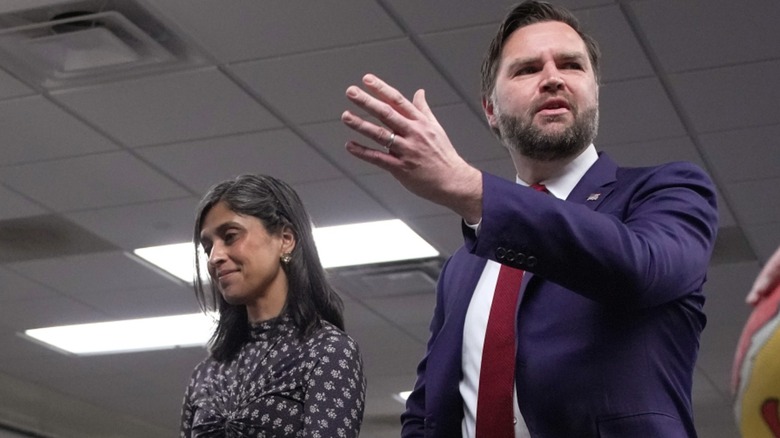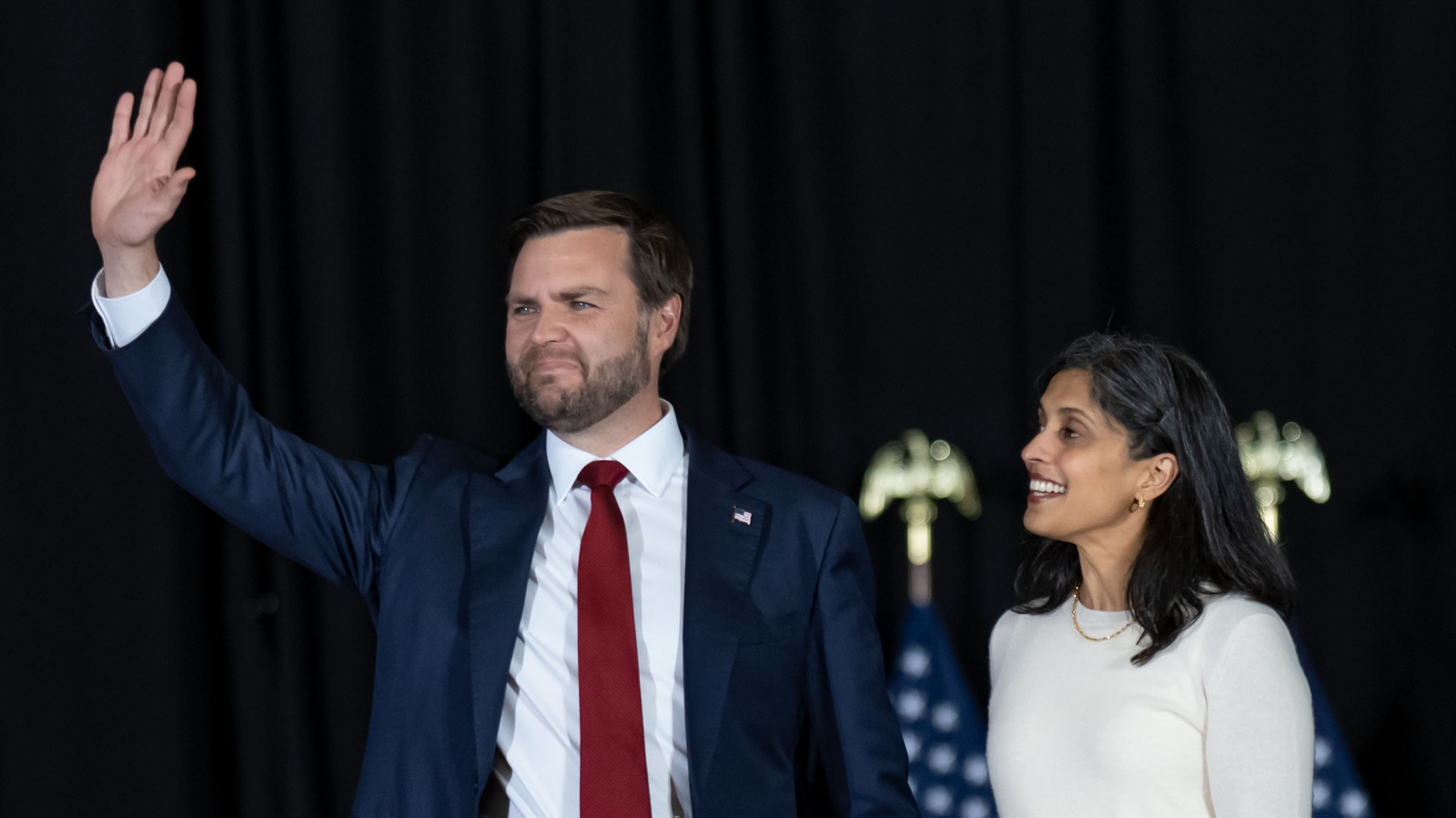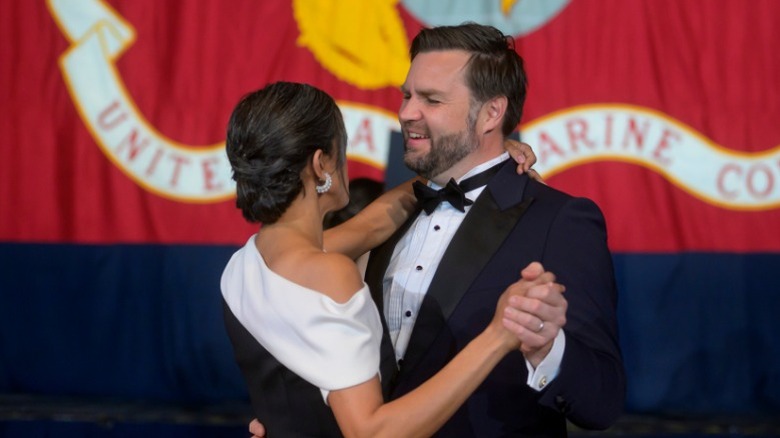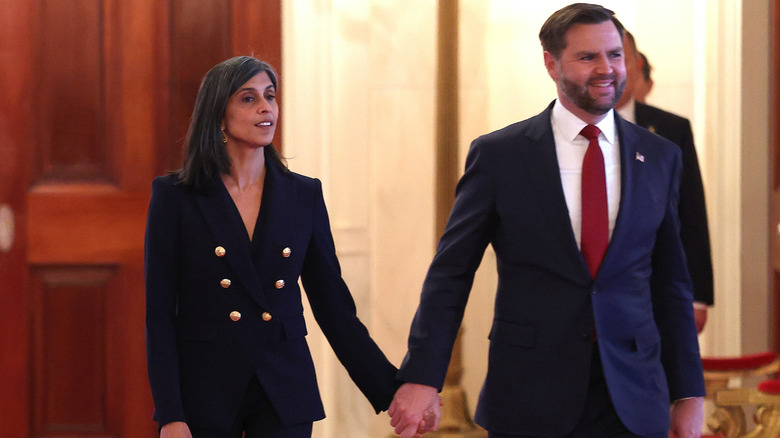During the first year of JD Vance’s vice presidency, public attention has increasingly shifted toward the dynamic between him and his wife, Usha Vance. While a vice president typically plays a limited role under a dominant president—especially with Donald Trump back in office—JD Vance has still managed to keep his name circulating in media headlines. His decision to temporarily host Charlie Kirk’s show, described by some commentators as an effort to maintain visibility, has fueled speculation about how the pressures of public life might be affecting his marriage. These discussions intensified after recent public appearances in which observers and body-language analysts noticed what they interpreted as signs of tension between the couple.

On November 10, JD and Usha visited the Military Advanced Training Center at Walter Reed National Military Medical Center. Footage of their appearance quickly spread online, with viewers dissecting every gesture. According to body language expert and celebrity relationship coach Nicole Moore, who analyzed the footage, Usha’s smile in the clip did not necessarily align with her body’s physical responses. Moore observed that although Usha maintained a polite expression, her posture suggested something more complicated underneath.
Moore pointed specifically to the moment JD caught a medicine ball during the demonstration. As he did, Usha shifted her body away from him, stepped back, and crossed her arms. Moore explained that, from a body-language analysis standpoint, these behaviors can indicate discomfort, self-protection, or an unconscious desire to increase physical distance. She concluded that Usha’s body “may be trying to create space or a barrier” between herself and her husband. Moore noted that such gestures do not prove anything definitive about the state of a relationship but can suggest internal tension or unease in the moment.
These interpretations have gained traction largely because observers have already been discussing whether the intense pressure of JD Vance’s new political life is affecting his marriage. None of these concerns have been confirmed by the couple themselves, but the speculation persists, particularly when moments like the Walter Reed clip reinforce what some consider a pattern of stiffness or emotional distance. Moore emphasized that public moments like this can become magnified once the idea of marital strain is already circulating, making every movement subject to heightened scrutiny.

Just two days before their Walter Reed appearance, JD and Usha also attended the Marine Corps Ball, a high-profile annual event known for its ceremonial formality and crowded social environment. Video from the evening spread online, and once again, viewers and analysts fixated on Usha’s demeanor. In the footage, her posture appeared straight, composed, and unusually controlled—traits that body-language experts sometimes interpret as signs of nervousness or emotional tension.
Observing the clip, Moore described Usha as looking “rigid and uncomfortable,” and she offered several possible explanations for this interpretation. One possibility, Moore suggested, is that Usha may simply have been nervous in front of a large audience, especially given the formal environment and the expectations placed on public figures. JD, who served in the Marine Corps, may have felt more at ease surrounded by fellow veterans, whereas Usha might have been navigating a social atmosphere that remains unfamiliar. Moore emphasized that body language can reflect immediate situational discomfort rather than broader relationship issues.
Even when Usha initiated moments of affection—such as touching JD’s arm or giving him a light kiss on the cheek—some viewers online felt the gestures appeared controlled rather than spontaneous. Moore interpreted these as potentially “short and perfunctory” movements, offering the perspective that Usha may have been performing affection in a ceremonial setting rather than expressing something from a place of ease or emotional vulnerability. She again cautioned that these interpretations are not definitive indicators of marital conflict but instead reflections of how a person carries themselves under pressure or public attention.

Public curiosity about the couple’s relationship has been further fueled by JD Vance’s own past comments. At various times before entering office, he spoke openly in interviews about periods of difficulty within their marriage, describing challenging moments both before and during his political rise. These comments, previously discussed in media reports, are frequently cited by those who believe the couple may be navigating significant personal stress behind the scenes. However, it remains important to note that neither JD nor Usha has ever publicly confirmed any current marital problems, and much of the discussion surrounding them is rooted in outside interpretation rather than direct statements.
Moore acknowledged this nuance, stressing that Usha’s body language may simply reflect her internal state—nervousness, self-consciousness, or the immense adjustment required when transitioning into the public role of second lady. Becoming a high-visibility political spouse often demands sudden shifts in lifestyle, exposure, and responsibility. For someone used to maintaining privacy, the expectations and pressures can be overwhelming, and those emotions can naturally affect posture, expressions, and gestures during formal events.
Still, the combination of JD Vance’s undeniably high-profile role under a dominating administration, his attempts to maintain media relevance, his past comments about the challenges of marriage, and the body-language interpretations now circulating online have created a public narrative that is proving difficult to quiet. With every appearance, new clips emerge, new analyses are offered, and new questions arise about what is happening behind the scenes.

It is also important to recognize that body-language interpretation is not an exact science. Experts like Moore offer possibilities based on patterns, behavioral cues, and common psychological signals, but they cannot determine with certainty what someone feels in a given moment. Moore explicitly noted that Usha may simply have been “in her own head” during those events—preoccupied, overwhelmed, or adjusting to her new responsibilities. In this interpretation, her stiffness or distancing movements could reflect anxiety rather than marital dissatisfaction.
The intensity of public scrutiny surrounding political spouses often reveals more about societal expectations than about the individuals themselves. Every small gesture becomes magnified, and moments that may be mundane or harmless in private become fuel for speculation when captured on camera. Usha Vance’s journey into the public sphere has been abrupt, challenging, and highly visible, and it is understandable that she might still be adapting.
Regardless of whether these observations reflect deeper issues or simply situational discomfort, what is clear is that the conversations around JD and Usha Vance’s body language are likely to continue, especially as their roles remain central to national politics. As long as the second couple remains in the public eye, commentators, analysts, and viewers will continue drawing their own conclusions—whether or not those interpretations reflect the reality of the couple’s private life.

For now, the most accurate takeaway is the one offered by Nicole Moore herself: body language may reveal possibilities, but it is not definitive proof of anything. Usha’s behaviors may reflect discomfort with public roles rather than discomfort within her marriage. And as with many political couples, the truth of their relationship remains known only to the two of them, regardless of what the cameras capture or how the public interprets it.





